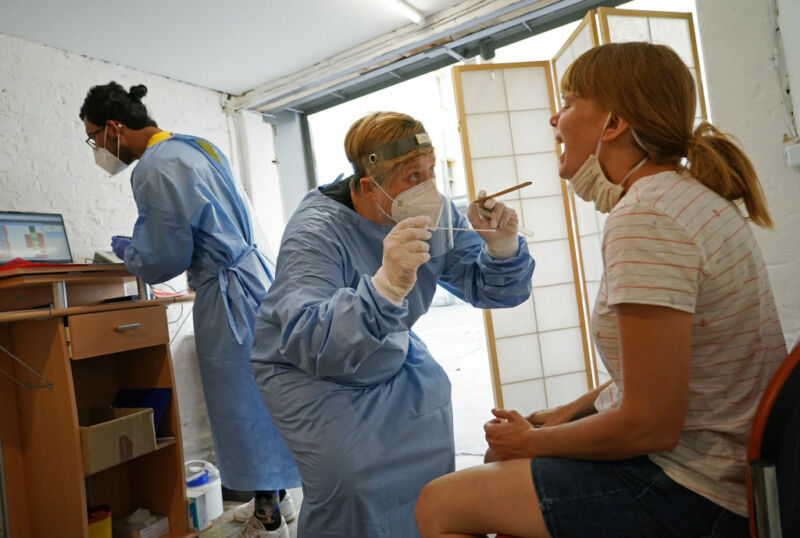New study models ways of emerging from a pandemic lockdown

Enlarge / Testing and contact tracing may be essential for exiting pandemic lockdowns. (credit: Sean Gallup / Getty Images)
As the scale and threat of the COVID-19 pandemic became clear, researchers who trace the spread of diseases were pretty unanimous: to buy us time to develop a therapy or vaccine, countries needed to implement heavy-handed restrictions to limit the opportunities for the virus to spread. Experts painted frightening pictures of huge peaks of infections that would overwhelm local hospital systems if lockdowns weren't put in place, leading to many unnecessary deaths. For countries like Italy and Spain, which were already in the throes of an uncontrolled spread, reality bore these predictions out. Peaks rose sharply in advance of restrictions but fell nearly as sharply once they were put in place.
But those same models also predicted that ending the restrictions would put countries at risk of a return of the virus a few months later, forcing governments to again decide between strict restrictions or an out-of-control pandemic in the next step of a cycle that would repeat until a vaccine or therapy became available. Those countries now have a somewhat different question: are there ways of controlling the virus without resorting to a cycle of on-and-off lockdowns? For countries like the US, which implemented restrictions briefly, erratically, and half heartedly, such that peaks haven't been separated by much of a trough, the same question will become relevant if we ever get the virus under control.
A new study by a large international team uses epidemiological models to explore ways of keeping things in check while allowing most of the population to resume a semi-normal life. It finds that there are ways of handling restriction easing, but they require a combination of an effective contact tracing system, extensive testing, and a willingness of households to quarantine together.
Read 15 remaining paragraphs | Comments